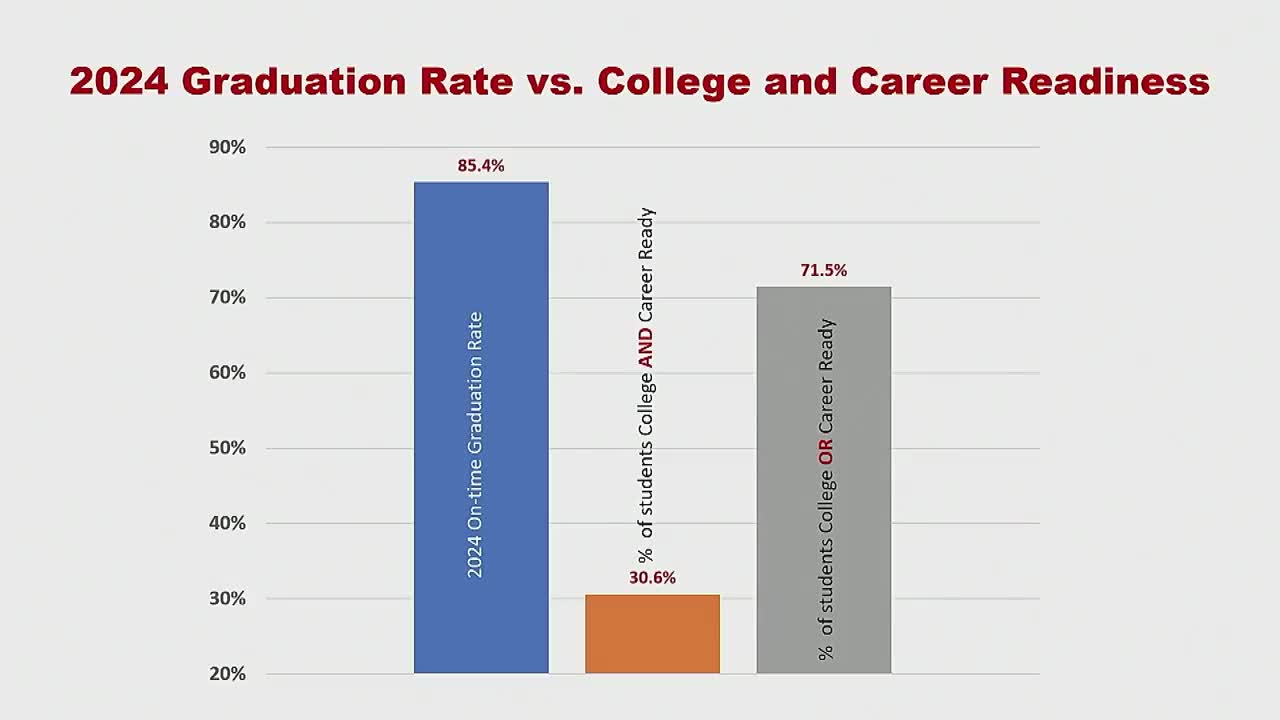South Carolina committee addresses 85% graduation rate and 30% college readiness concern
May 28, 2025 | 2025 Legislative Meetings, South Carolina
This article was created by AI summarizing key points discussed. AI makes mistakes, so for full details and context, please refer to the video of the full meeting. Please report any errors so we can fix them. Report an error »

In a recent meeting of the Labor, Commerce and Industry Committee's Insurance Rate Review Ad Hoc Committee, significant discussions centered around the state of education in South Carolina, particularly focusing on high school graduation rates and college readiness. The meeting, held on May 28, 2025, revealed that while 85.4% of high school students graduated on time in 2024, only about 30% of those graduates were deemed ready for college or careers.
This disparity raises critical questions about the effectiveness of the current education system. Committee members expressed concern over the implications of these statistics, particularly the fact that a substantial portion of graduates—approximately 24%—are leaving high school without the necessary skills or credentials to succeed in further education or the workforce.
The committee highlighted ongoing efforts to address these issues, including a focus on improving the rigor of high school curricula and ensuring that students graduate with valuable credentials. The discussion emphasized the need for a more robust accountability system that aligns educational outcomes with the skills required in higher education and the job market.
Additionally, the meeting touched on the importance of addressing chronic absenteeism, which affects academic performance. In the 2022-2023 school year, 3% of students were classified as chronically absent, missing about 10% of the school year. This issue is seen as a significant barrier to improving graduation rates and overall student success.
The committee also introduced a new dashboard aimed at providing transparency and data on educational performance across the state. This tool will allow stakeholders to analyze spending versus performance at individual schools, fostering a more informed dialogue about educational effectiveness.
As the committee continues its work, it remains committed to ensuring that South Carolina's students not only graduate but do so with the skills and readiness necessary for their future endeavors. The discussions from this meeting underscore the urgent need for systemic changes to enhance educational outcomes for all students in the state.
This disparity raises critical questions about the effectiveness of the current education system. Committee members expressed concern over the implications of these statistics, particularly the fact that a substantial portion of graduates—approximately 24%—are leaving high school without the necessary skills or credentials to succeed in further education or the workforce.
The committee highlighted ongoing efforts to address these issues, including a focus on improving the rigor of high school curricula and ensuring that students graduate with valuable credentials. The discussion emphasized the need for a more robust accountability system that aligns educational outcomes with the skills required in higher education and the job market.
Additionally, the meeting touched on the importance of addressing chronic absenteeism, which affects academic performance. In the 2022-2023 school year, 3% of students were classified as chronically absent, missing about 10% of the school year. This issue is seen as a significant barrier to improving graduation rates and overall student success.
The committee also introduced a new dashboard aimed at providing transparency and data on educational performance across the state. This tool will allow stakeholders to analyze spending versus performance at individual schools, fostering a more informed dialogue about educational effectiveness.
As the committee continues its work, it remains committed to ensuring that South Carolina's students not only graduate but do so with the skills and readiness necessary for their future endeavors. The discussions from this meeting underscore the urgent need for systemic changes to enhance educational outcomes for all students in the state.
View full meeting
This article is based on a recent meeting—watch the full video and explore the complete transcript for deeper insights into the discussion.
View full meeting